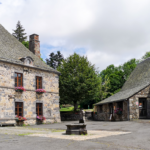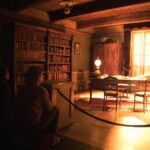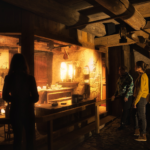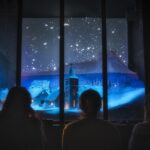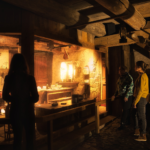Only an hour from Clermont-Ferrand, the beautiful mountain village of Murat-le-Quaire transforms into a camping and backpacking paradise every summer, drawing tourists from all over Europe. Much like other towns in the Sancy mountains, Murat is a gateway to some of the most scenic trails and vistas in the Auvergne highlands. The town itself also boasts one of the most interesting cultural history museums in the region: the Scenomuseum of Toinette and Julien.

Run by Margarie Campagne — a former project officer at Sancy’s office of tourism — the museum is situated opposite Murat’s town hall and features two separate areas. The first is Toinette’s House, an interactive, multi-room exhibit that focuses on rural life in the nineteenth and early twentieth centuries. The second, Julien’s Grange, shifts the focus to the early 1990s. The museum’s premises also include a barn, in which are displayed donated vintage farming equipment and photos by the acclaimed photographer Abbé Joseph Gély.
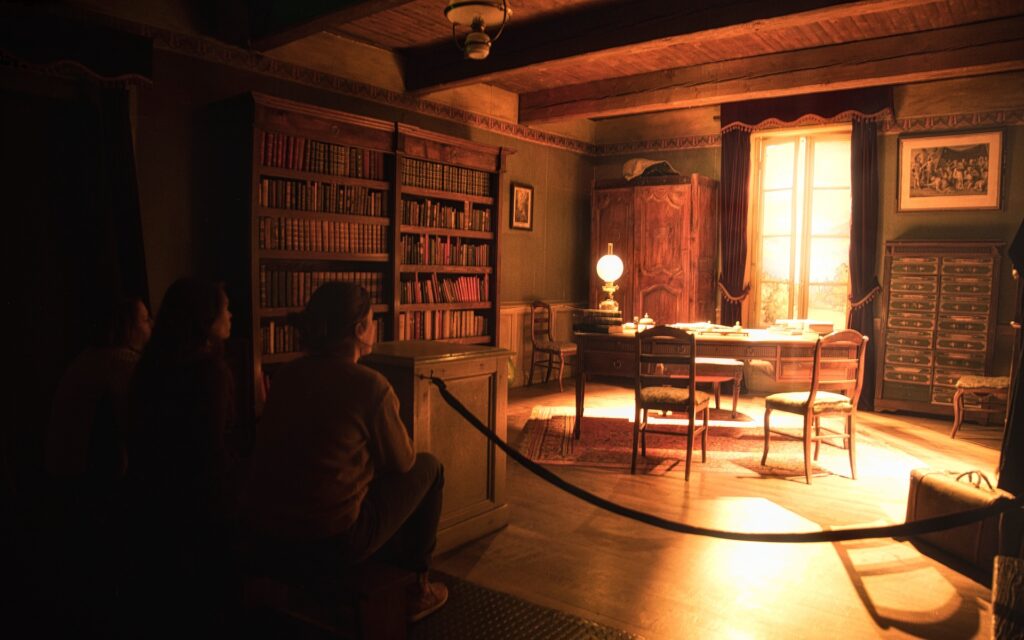
The Scenomuseum was the brainchild of Marcel Bony, a Murat-Le-Quaire farmer who turned his hand to politics, first rising to mayor of the town — and eventually — to regional senator. Bony, Campagne told me, felt passionately about preserving the memory of Auvergne’s fading mountain cultures and worked to establish the museum in 1993. I visited Toinette’s House, which is a kind of walk-through, theatrical tour guided by the voice of “Toinnette”, a character meant to represent a prototypical resident of Murat in the mid-1800s.
At the beginning of her presentation, Toinette promised to convey the “soul” (as she put it) of Muratoise country. Afterwards she introduced her relatives and pointed out the different parts of her farmhouse. As I stood in the chiaroscuro light, I heard and saw how Toinette’s family dined and kept busy during the day as well as in the long winter evenings. With dream-like ease, the modern world soon vanished before my eyes. In no time, I became an Auvergne highlander. Lulled by Toinette’s grandmotherly voice, I imagined myself at the family table with a pot of steaming cabbage soup before me and a tumbler of wine in my hand.
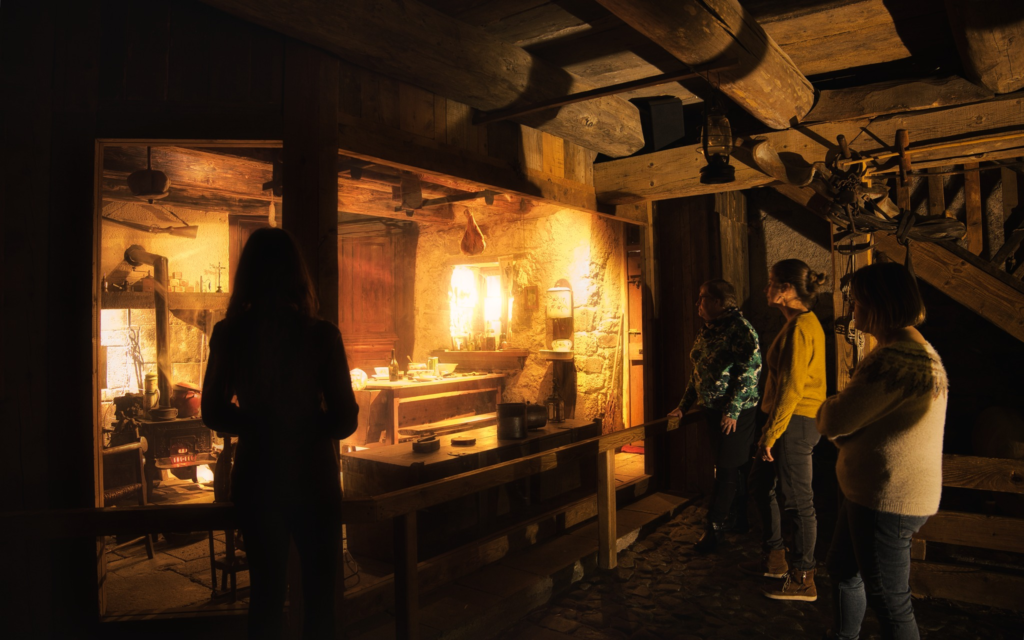
Toinette also spoke about day-to-day rituals and beliefs; things you weren’t allowed to do, and prayers you were expected to recite. I quite enjoyed listening to her make reference to various Auvergne legends. Auvergne has a long and storied tradition of “sorcerer-priests” and Toinette told a few interesting anecdotes about the “Sacristan of Satan”, a devilish figure whose dark deeds and arts always happened to be the talk of her town.
Throughout the tour, almost at every moment, I was reminded of the hard realities of mountain life. The elements ruled supreme; everything was at their mercy. Winters often lasted up to six months, which meant that — aside from the occasional veillée (evening gathering) — townspeople spent half the year in complete isolation.
All in all , the museum paints quite a moving portrait of the rural wisdom and resolve of former days. In Toinette’s House, the stagecraft, photographic sequences, and narration convincingly evoke the hopes, fears, and folkways of Old Auvergne. You travel across timelines, see romances bloom, and encounter –on and on again — cycles of birth and death. You emerge from the tour feeling not only like a time-traveler but also with a new cross-generational connection to societies long past.




